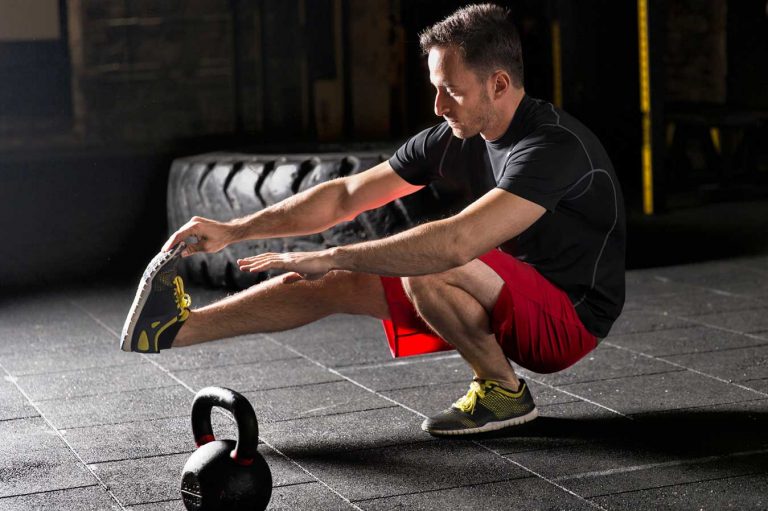The author of this workout, Anna Junghans, intended it to be for females. However, like most kettlebell workouts, anyone can benefit from it! It’s simplistic by design which makes it great for beginners. However, still effective enough for kettlebell veterans who want to work on their balance and dexterity.
I’m always impressed with the ability of kettlebell trainers to speak and engage with their audience WHILE performing each step of the workout. It doesn’t matter the difficulty level. The fact that they need to concentrate on the movements and focus on articulating each step into words deserves appreciation. In the video below, you’ll see Anna guide the audience but also provide some commentary. Things like describing why a particular exercise is beneficial and also the purpose of the overall progression of the workout is a nice bonus for sure.
The first thing you’ll notice is that this workout consists of 4 exercises in 2 sets. Each set taking approximately 4 minutes to reach that 8 minute total. If you want to push it further, Anna recommends taking a 2-minute breather and then doubling the workout for 16 minutes total. That would make for a great session or you could always combine the 2 sets with another short workout of your choosing.
Exercises Featured in This Workout
The kettlebell exercises performed in this workout aren’t punishing by any means. However, that’s not the purpose. Personally, I like how the swing is the first exercise as I find that to be the most demanding. It’s good to get the harder stuff out of the way first so your body can slightly cool down at the end.
Exercises in Order
- Kettlebell Swing – 2-handed for 1 minute
- Standard Deadlift – for 1 minute
- Around the Body – 30 seconds each direction
- Halo – 30 seconds each direction
It’s recommended that this workout is done with either a medium or a lighter-sized kettlebell. Remember, the goal isn’t power and strength but rather balancing and coordination. You’ll notice how Anna is using a competition kettlebell instead of a regular-style kettlebell. Although it’s not necessary, I think it’s important to mention the difference between them.
Competition kettlebells, while designed in mind for professional events, are uniform in design. The base of the kettlebell is the same size no matter how heavy it is. Compare that to regular kettlebells that see the base size increase in proportion to the weight. Also, the handle size and width of competition kettlebells are squarish other than the rounded corners. In effect, there is more space for your hands to grab the handle of the kettlebell with competition kettlebells.
Why do I think this is important? About a month ago, I had arguably my worst day with kettlebells. In the span of about 5 minutes, I dropped my 35-pound kettlebell twice while doing around-the-body exercises. I think this was mostly due to my wearing the hell out of my gloves which affected my grip. I had been using the 35-pound kettlebell for months so it wasn’t a matter of having adjusted to it yet. While I prefer wearing gloves while doing my kettlebell workouts, certain exercises like around the body are important in terms of having a good grip.
Since you’re transferring from one hand to the other, you want to make that process as smooth and seamless as possible. That could mean working out bare-handed (or a better/new pair of gloves which I did get) or having the wider window to insert your hand during the transfer. By no means am I advocating for one style of kettlebell over the other, but just something to think about whenever you’re passing the kettlebell around like that.



